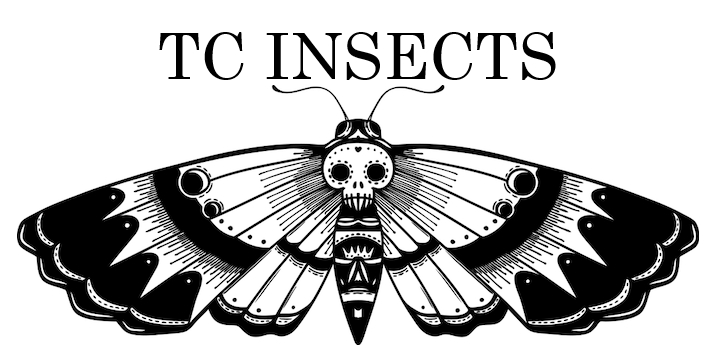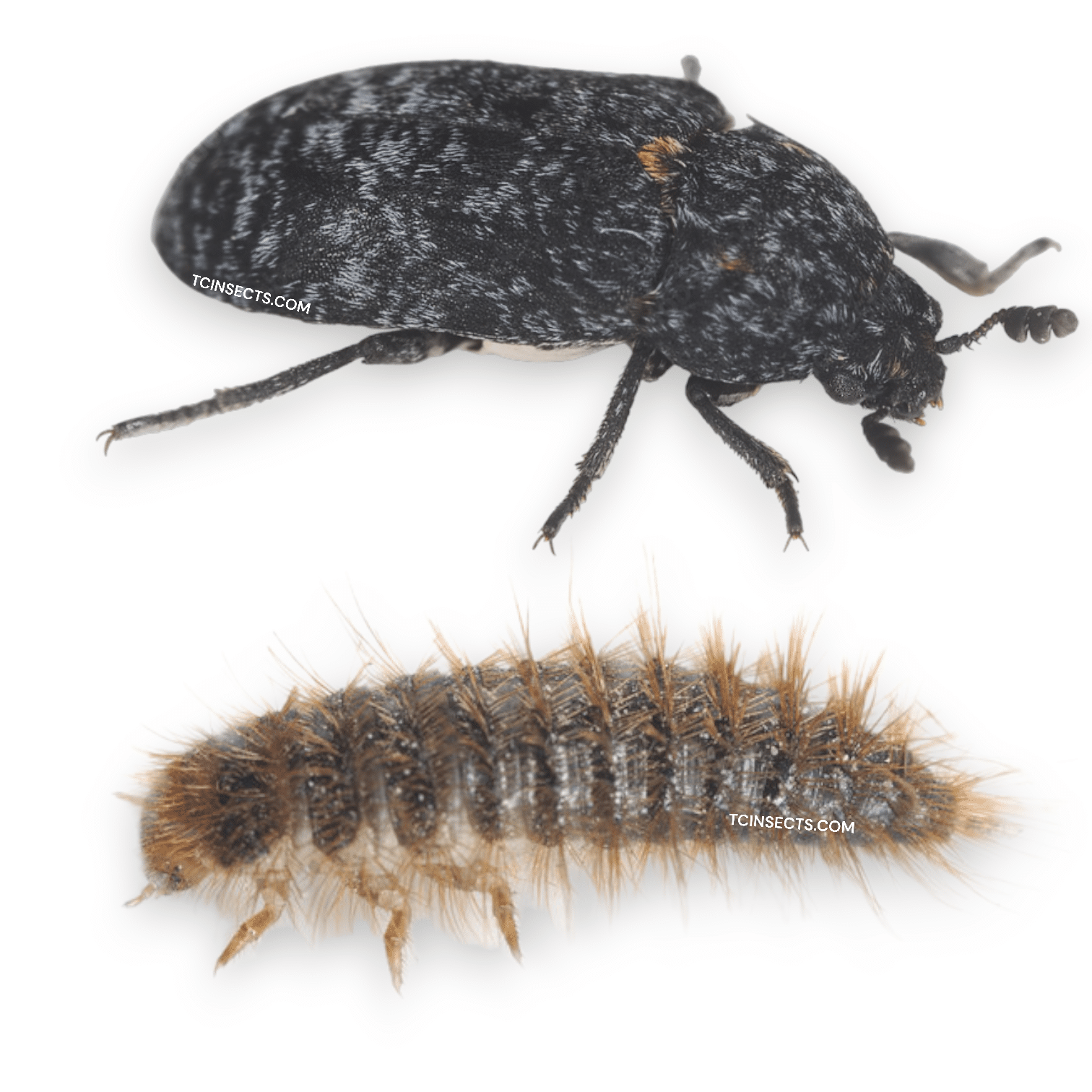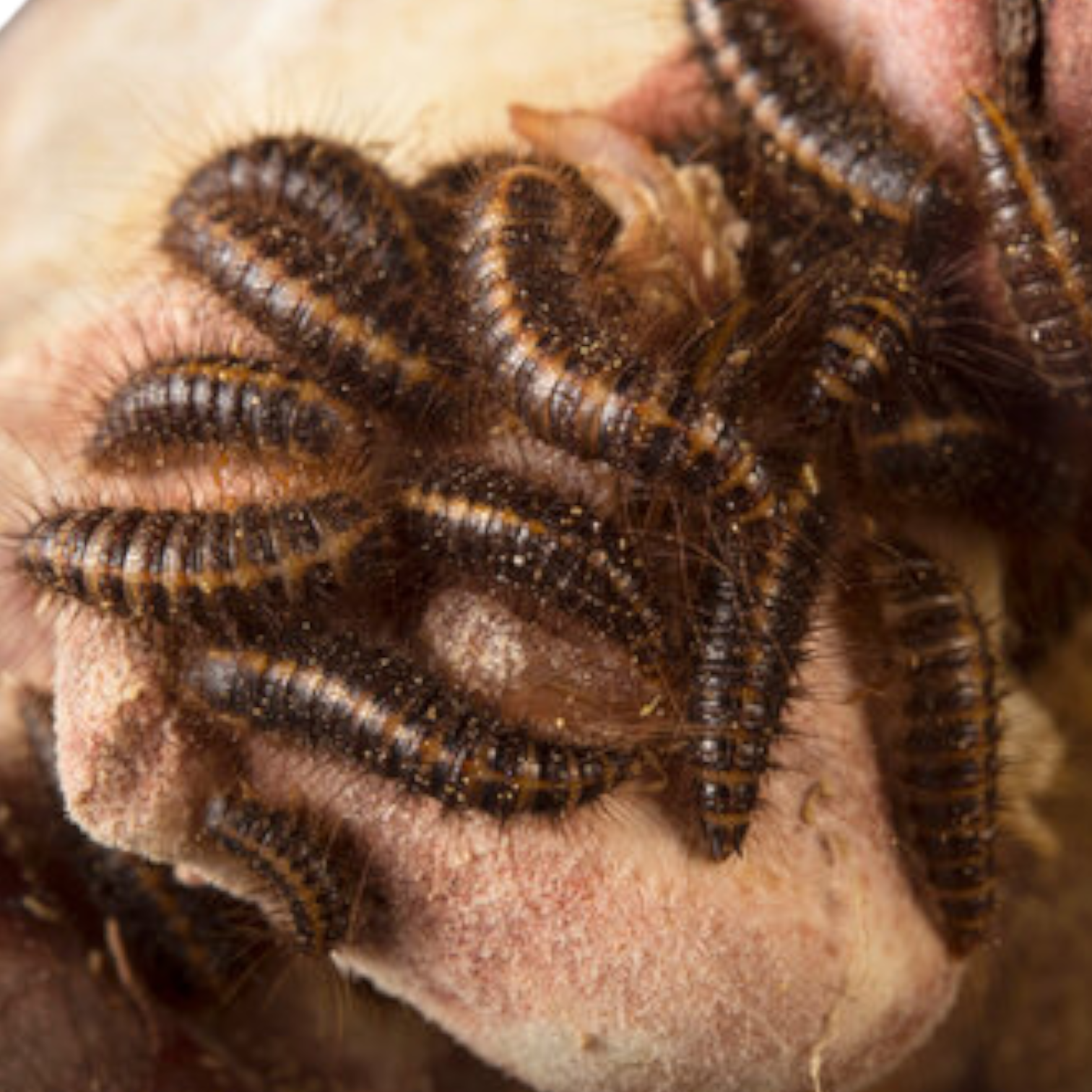Dermestid Beetle Larvae: Nature’s Cleaning Crew
Dermestid beetle larvae, also known as leather beetles, are nature’s little cleaners. These beneficial insects have a voracious appetite for organic matter, making them an effective and eco-friendly solution for a variety of projects. These are used to clean skulls in Taxidermy and used to keep insect colonies clean the natural way
Dermestid beetle larvae are commonly used in taxidermy to clean flesh from bones and skulls. They are very effective at removing all of the flesh, leaving behind a clean, white bone.
Below we have instructions for their use in Taxidermy and below their use in Insect colonies as cleaners
Dermestid Beetle Larvae in Taxidermy
Here are the steps on how to use dermestid beetle larvae in taxidermy:
- Obtain dermestid beetle larvae. We suggest TCINSECTS.COM! You will need a colony of at least 500 larvae for a small specimen, and more for a larger specimen.
- Prepare a container for the larvae. You can use a plastic bin, aquarium, or other container with a screen top. The container should be large enough to accommodate the larvae and the specimen you are cleaning.
- Add bedding to the container. The bedding should be a dry, absorbent material, such as cedar shavings or sawdust. The bedding will provide the larvae with a place to hide and pupate.
- Add the specimen to the container. Place the specimen on a wire mesh rack or screen to prevent the larvae from directly contacting the specimen. You can also wrap the specimen in cheesecloth or other open-weave fabric to protect it from the larvae.
- Introduce the dermestid beetle larvae to the container. Start with a small number of larvae, and add more as needed. The larvae will quickly start to consume the flesh from the specimen.
- Monitor the larvae. The larvae will take several weeks to months to clean the specimen. Check the larvae periodically to make sure they are still alive and active. If the larvae are not eating, you may need to add more food or adjust the temperature and humidity in the container.
- Remove the specimen from the container once it is clean. Once the specimen is clean, remove it from the container and prepare it for mounting or display.
Here are some additional tips for using dermestid beetle larvae in taxidermy:
- Keep the container in a warm, humid place. The larvae will thrive in a temperature range of 70-80 degrees Fahrenheit and a humidity level of 50-60%.
- Do not overcrowd the container. The larvae need enough space to move around and eat.
- Do not use dermestid beetle larvae on specimens that have been treated with chemicals. The chemicals can harm the larvae.
- Wear gloves when handling dermestid beetle larvae. The larvae can cause skin irritation.
Dermestid beetle larvae are a valuable tool for taxidermists. They are a safe, effective, and eco-friendly way to clean flesh from bones and skulls. With proper care, dermestid beetle larvae can be used to clean a variety of specimens.
Dermestid Beetle Larvae as Cleaners in Insect Colonies
Benefits of using dermestid beetle larvae as cleaners in insect colonies:
- Prevents the buildup of organic matter: Dead insects, feces, and mold can build up in insect colonies, creating an unhealthy environment for the insects. Dermestid beetle larvae will consume this organic matter, keeping the colony clean and preventing the spread of disease.
- Reduces the risk of pests: Organic matter can attract pests, such as flies and mites. Dermestid beetle larvae will help to control these pests by consuming their food sources.
- Improves the overall health of the colony: By keeping the colony clean and reducing the risk of pests, dermestid beetle larvae can help to improve the overall health of the insect colony.
How to use dermestid beetle larvae as cleaners in insect colonies:
- Purchase dermestid beetle larvae. We suggest TCINSECTS.COM!
- Prepare a container for the larvae. You can use a plastic bin, aquarium, or other container with a screen top. The container should be large enough to accommodate the larvae and the amount of organic matter you need to be cleaned.
- Add bedding to the container. The bedding should be a dry, absorbent material, such as cedar shavings or sawdust. The bedding will provide the larvae with a place to hide and pupate.
- Introduce the dermestid beetle larvae to the container. Start with a small number of larvae, and add more as needed. The larvae will quickly start to consume the organic matter.
- Monitor the larvae. The larvae will take several weeks to months to clean the organic matter. Check the larvae periodically to make sure they are still alive and active. If the larvae are not eating, you may need to add more food or adjust the temperature and humidity in the container.
- Remove the cleaned organic matter from the container. Once the organic matter has been cleaned, you can remove it from the container and dispose of it.
Additional tips:
- Keep the container in a warm, humid place. The larvae will thrive in a temperature range of 70-80 degrees Fahrenheit and a humidity level of 50-60%.
- Do not overcrowd the container. The larvae need enough space to move around and eat.
- Do not use dermestid beetle larvae on specimens that have been treated with chemicals. The chemicals can harm the larvae.
- Wear gloves when handling dermestid beetle larvae. The larvae can cause skin irritation.
Dermestid beetle larvae are a valuable tool for keepers of insect colonies. They are a safe, effective, and eco-friendly way to keep insect colonies clean and healthy.






